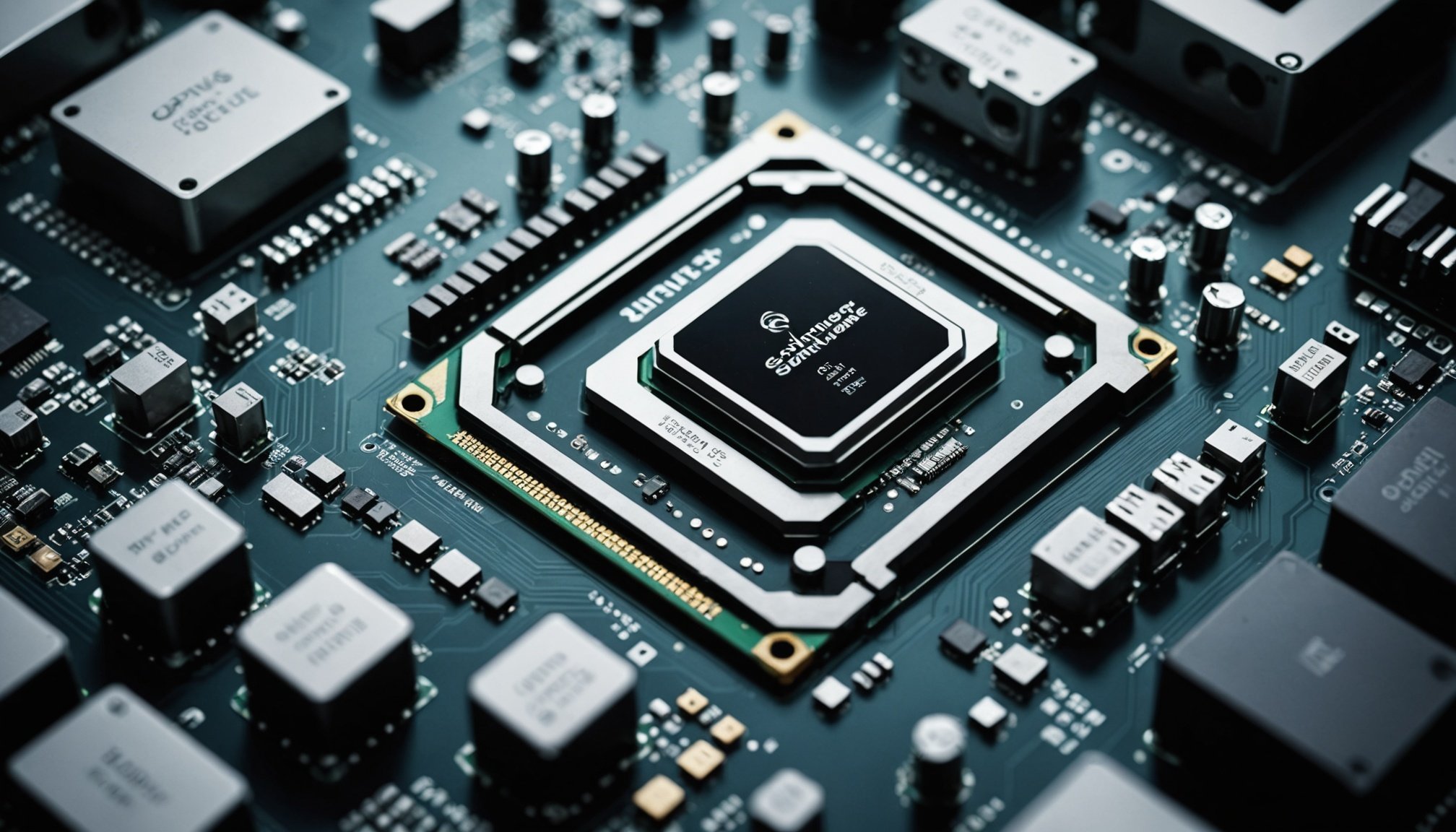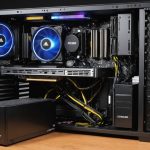The Impact of Software Updates on Computer Hardware Performance
In the ever-evolving world of technology, keeping your computer up-to-date is crucial for both security and performance. Software updates, while often seen as a necessity for protecting against cyber threats and adding new features, can also have significant effects on your computer’s hardware performance. In this article, we will delve into the various ways software updates can influence your computer’s hardware, and provide practical advice on how to manage these updates effectively.
Understanding Software Updates and Hardware Performance
Software updates are designed to enhance the functionality, security, and overall user experience of your computer. However, these updates can sometimes have unintended consequences on hardware performance.
Also read : Top Security Strategies to Protect Your Lenovo ThinkCentre M90n Remote Desktop Connection
How Software Updates Affect Hardware
Software updates can impact hardware performance in several ways:
-
Resource Utilization: New software updates often require more system resources such as RAM, CPU power, and disk space. If your hardware is not robust enough, this can lead to slower performance and increased load times[4].
Also to discover : Top pitfalls to dodge when assembling your debut gaming pc
-
Compatibility Issues: Sometimes, new software updates may not be fully compatible with older hardware components. This can result in compatibility issues, such as drivers not working correctly or hardware components not being recognized by the system[3].
-
Power Consumption: Updated software may consume more power, especially if it includes new features that require additional processing power or memory. This can be particularly noticeable in laptops, where battery life might be affected[2].
Optimizing Performance Through Regular Updates
Regular software updates are essential for maintaining the optimal performance of your computer. Here are some best practices to ensure that these updates benefit your hardware performance:
Mises à Jour Régulières du Système d’Exploitation
Regular updates to your operating system are critical for performance and security. Here are a few reasons why:
-
Security Patches: Updates often include security patches that protect against cyber threats. These patches can prevent malware from exploiting vulnerabilities in your system, ensuring that your data remains safe[1][3].
-
Performance Enhancements: Operating system updates can include performance enhancements that optimize how the system uses hardware resources. For example, updates might improve how the system manages memory or disk usage.
-
New Features: New features added through updates can enhance the user experience. For instance, Windows 11 includes features like TPM 2.0 and improved window management, which can make your system more secure and efficient[3].
Updating Firmware and BIOS
Updating the BIOS (Basic Input/Output System) and firmware of your hardware components is also crucial for maintaining performance and compatibility.
-
BIOS Updates: BIOS updates can improve hardware compatibility, fix bugs, and enhance security. However, these updates must be done carefully to avoid instability or system failure[2].
“`plaintext
Steps to Update BIOS
-
Prepare a USB drive with the update file.
-
Restart your computer and enter the BIOS settings.
-
Find the update utility (e.g., EZ Flash, Q-Flash).
-
Select the update file from the USB drive.
-
Follow on-screen instructions to complete the update.
-
Do not interrupt the update process.
“` -
Firmware Updates: Firmware updates for components like hard drives or network cards can improve their performance and stability. These updates are usually provided by the hardware manufacturer and should be applied regularly.
Managing Software Updates to Avoid Performance Issues
To ensure that software updates do not negatively impact your hardware performance, follow these best practices:
Patch Management
Effective patch management is key to maintaining system performance. Here are some tips:
-
Prioritize Updates: Prioritize updates based on their importance. Security patches should be applied immediately, while feature updates can be scheduled for a more convenient time[2].
-
Test Updates: Before applying updates to all devices, test them on a small group of machines to ensure they do not cause any compatibility issues.
-
Schedule Updates: Schedule updates during times when the system is not under heavy load. This can help prevent disruptions to critical operations.
Monitoring System Resources
Keep an eye on how software updates affect your system resources.
-
Resource Monitoring Tools: Use tools provided by your operating system or third-party software to monitor CPU, RAM, and disk usage. This can help you identify if an update is consuming more resources than expected[4].
-
Adjust Settings: Adjust system settings to optimize performance. For example, you can adjust visual effects settings in Windows to prioritize performance over aesthetics.
Hardware Upgrades and Compatibility
Sometimes, software updates may require hardware upgrades to maintain optimal performance.
Identifying the Need for Hardware Upgrades
Here are some signs that you might need to upgrade your hardware:
- Slow Performance: If your computer is significantly slower after applying software updates, it might be a sign that your hardware is outdated.
- Compatibility Issues: If you encounter frequent compatibility issues, such as drivers not working correctly, it may be time to consider hardware upgrades.
Options for Hardware Upgrades
If your hardware is not compatible with the latest software updates, you have several options:
-
Upgrade Specific Components: You can upgrade specific components like RAM, hard drives (to SSDs), or graphics cards to improve performance[3].
“`plaintext
Benefits of Upgrading to SSD
-
Faster load times
-
Improved overall system performance
-
Reduced power consumption
-
Increased durability
“` -
Replace the Device: If the device is old and multiple components need upgrading, it might be more cost-effective to replace the device entirely.
Real-World Examples and Anecdotes
The Transition to Windows 11
The transition from Windows 10 to Windows 11 is a good example of how software updates can impact hardware performance. Windows 11 requires specific hardware components like TPM 2.0 and Secure Boot, which can be a challenge for older devices.
### Requirements for Windows 11
- TPM 2.0
- Secure Boot
- UEFI firmware
- 64-bit CPU
- 4GB RAM or more
- 64GB free disk space
For users who need to transition to Windows 11, upgrading hardware components or replacing the device might be necessary to ensure smooth performance.
BIOS Update Anecdote
Updating the BIOS can be a delicate process. For instance, if the update is interrupted due to a power outage, it can render the system unstable or even unusable. It is crucial to follow the manufacturer’s instructions carefully and ensure a stable power supply during the update process[2]. and Best Practices
Software updates are an essential part of maintaining your computer’s performance and security. Here are some key takeaways and best practices to keep in mind:
Key Takeaways
- Regular Updates: Regular software updates are crucial for security and performance.
- Compatibility Checks: Always check for compatibility issues before applying updates.
- Resource Monitoring: Monitor system resources to ensure updates do not consume too many resources.
- Hardware Upgrades: Be prepared to upgrade hardware components if necessary.
Best Practices
### Best Practices for Managing Software Updates
- Prioritize security patches.
- Test updates on a small group of devices before rolling them out.
- Schedule updates during low-usage times.
- Monitor system resources after updates.
- Keep your BIOS and firmware up-to-date.
- Consider hardware upgrades if necessary.
By following these best practices and staying informed about the latest software updates, you can ensure that your computer hardware performs optimally and remains secure over time.
Final Thoughts
In conclusion, software updates play a critical role in the performance and security of your computer hardware. By understanding the impact of these updates and following best practices, you can maintain a system that is both secure and performant. Remember, regular updates are not just about adding new features; they are about ensuring your system remains resilient against cyber threats and continues to perform at its best.
As a user, it is essential to stay proactive in managing software updates and to be prepared for any potential hardware upgrades that may be necessary. With the right approach, you can enjoy a seamless user experience while keeping your data and system safe.



